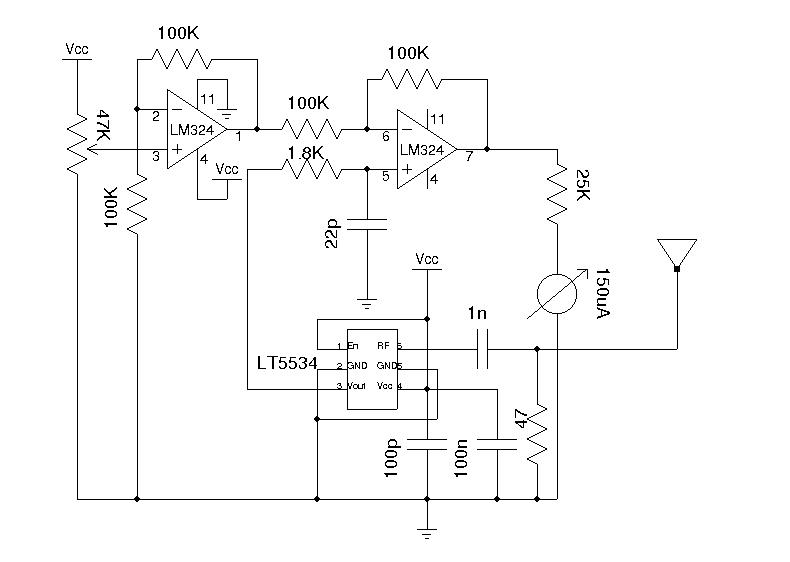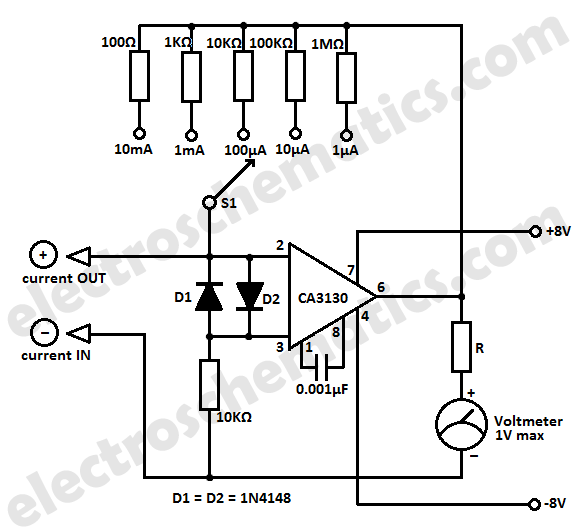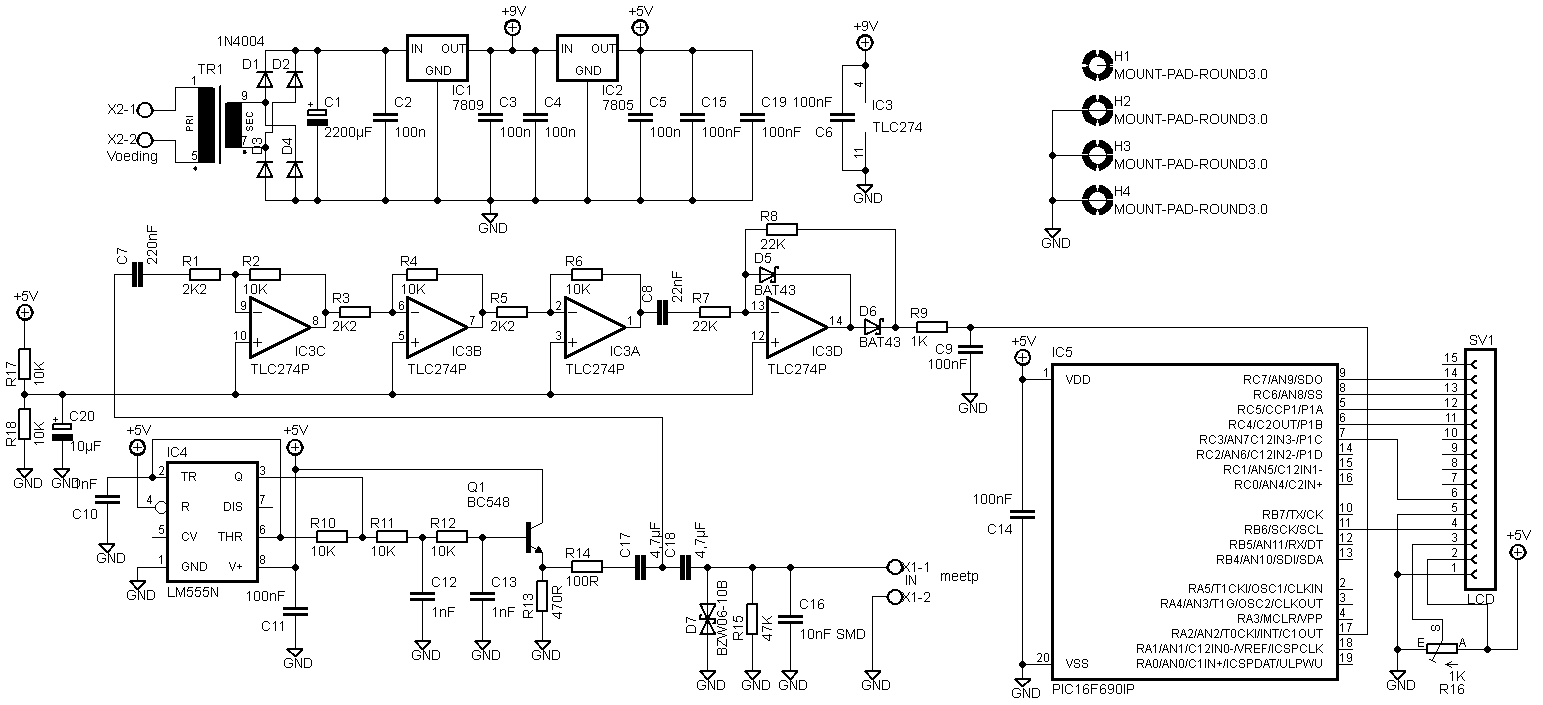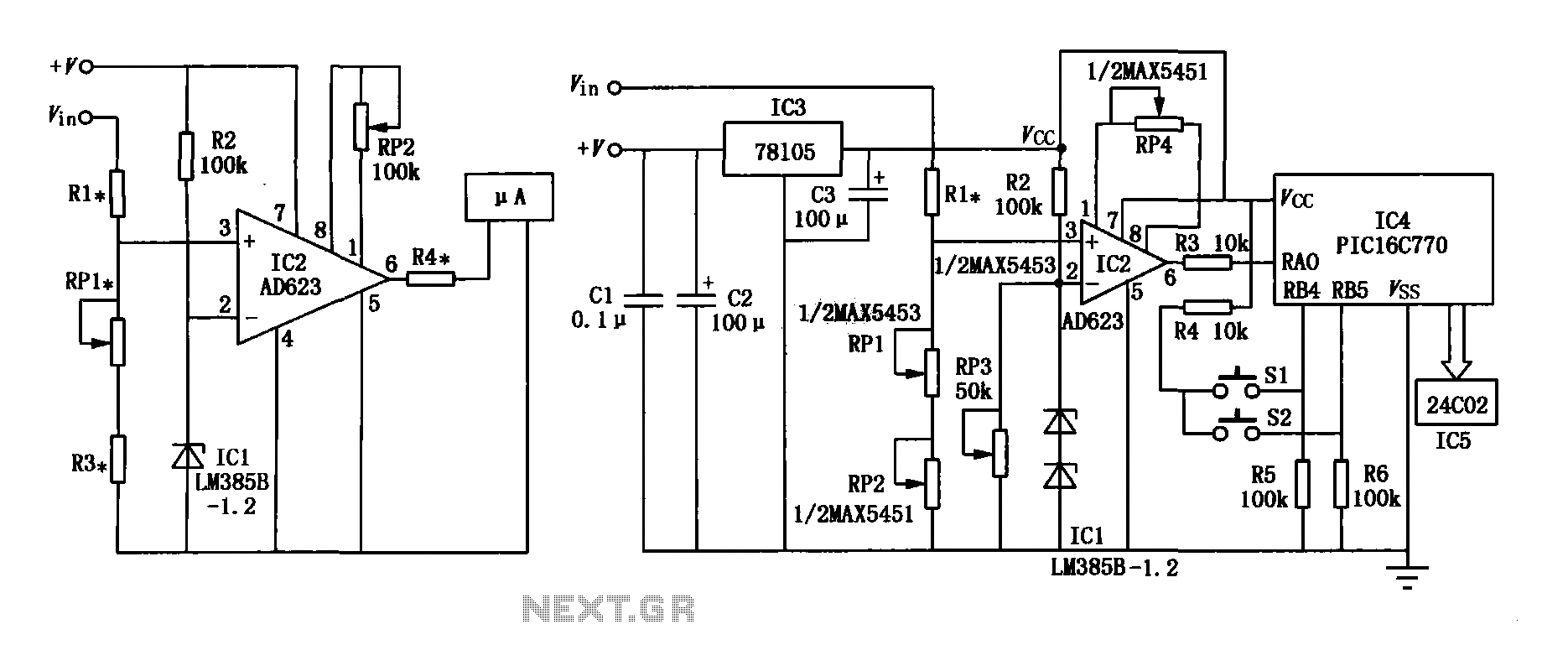
Wideband RF Field Strength Meter

A field strength meter is highly valuable when working with RF devices. It can quickly diagnose whether a transmitter circuit is functioning and detect RF signals in the environment. The simplest form of a field strength meter can be constructed using a tuned LC circuit and a germanium diode, similar to the construction of a crystal radio, but replacing the earpiece with a high-sensitivity current meter. While this method meets the requirements of most basic applications, it has a limited frequency range of approximately 100 MHz and necessitates tuning the LC circuit to the appropriate frequency before measurements can be taken. Additionally, the design can become complex if a wider frequency range is needed.
A field strength meter serves as an essential tool for RF engineers and technicians, facilitating the testing and troubleshooting of RF circuits. The basic construction of a field strength meter involves an LC circuit, which consists of an inductor (L) and a capacitor (C) that are tuned to resonate at a specific frequency. This resonant frequency allows the meter to respond effectively to RF signals within its operational range.
The use of a germanium diode in this configuration is critical, as it acts as a rectifier, converting the RF signal into a direct current (DC) signal that can be measured. The high-sensitivity current meter, which replaces the earpiece of a traditional crystal radio, provides a visual representation of the field strength by indicating the strength of the detected RF signal.
While the simple LC circuit design is adequate for many applications, its limited frequency range poses challenges for more advanced RF measurements. To address this, additional components such as variable capacitors or inductors can be introduced to allow for tuning across a broader frequency spectrum. However, this increases the complexity of the design and may require more sophisticated calibration techniques.
In practical applications, field strength meters can be employed for various tasks, including antenna alignment, signal strength assessment, and interference detection. Understanding the limitations and capabilities of the field strength meter is crucial for effective use in RF applications. Proper calibration and tuning are essential for accurate measurements, and users must be familiar with the characteristics of the specific RF environment in which the meter is deployed.Field strength meter is extremely useful when working with RF devices. It can be used to quickly diagnose whether a transmitter circuit is working, and can be used to detect RF signals in the environment. The simplest field strength meter could be built with a tuned LC circuit and a germanium diode, just like the way of a building a crystal radio except replacing the ear piece with a high sensitivity current meter.
While this approach fits the needs of most simple applications, it has a pretty narrow frequency range (~100 MHz) and requires tuning the LC circuit to the correct frequency before measurements can be made and the design can become complicated if wider frequency range tuning is desired 🔗 External reference
A field strength meter serves as an essential tool for RF engineers and technicians, facilitating the testing and troubleshooting of RF circuits. The basic construction of a field strength meter involves an LC circuit, which consists of an inductor (L) and a capacitor (C) that are tuned to resonate at a specific frequency. This resonant frequency allows the meter to respond effectively to RF signals within its operational range.
The use of a germanium diode in this configuration is critical, as it acts as a rectifier, converting the RF signal into a direct current (DC) signal that can be measured. The high-sensitivity current meter, which replaces the earpiece of a traditional crystal radio, provides a visual representation of the field strength by indicating the strength of the detected RF signal.
While the simple LC circuit design is adequate for many applications, its limited frequency range poses challenges for more advanced RF measurements. To address this, additional components such as variable capacitors or inductors can be introduced to allow for tuning across a broader frequency spectrum. However, this increases the complexity of the design and may require more sophisticated calibration techniques.
In practical applications, field strength meters can be employed for various tasks, including antenna alignment, signal strength assessment, and interference detection. Understanding the limitations and capabilities of the field strength meter is crucial for effective use in RF applications. Proper calibration and tuning are essential for accurate measurements, and users must be familiar with the characteristics of the specific RF environment in which the meter is deployed.Field strength meter is extremely useful when working with RF devices. It can be used to quickly diagnose whether a transmitter circuit is working, and can be used to detect RF signals in the environment. The simplest field strength meter could be built with a tuned LC circuit and a germanium diode, just like the way of a building a crystal radio except replacing the ear piece with a high sensitivity current meter.
While this approach fits the needs of most simple applications, it has a pretty narrow frequency range (~100 MHz) and requires tuning the LC circuit to the correct frequency before measurements can be made and the design can become complicated if wider frequency range tuning is desired 🔗 External reference





